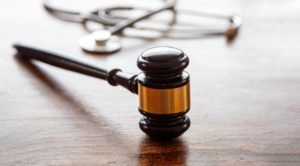Over at the St Cloud Blog I spent a week looking at a website that showed up on my Facebook page, there appeared an interesting advertisement for what was called Hot coffee truth.com. It is the insurance companies responding to the success of Hot Coffee the movie. They must be spending a lot of money because it isn’t the cheapest of marketing. But looking at what they spent, they probably would have been better off spending money on supporting facts. However, the plan of that group has never bothered with the truth, that’s why the movie was so important and it hit so hard.
Fellow Injuryboard lawyer Jon Lewis did a good job with his look at the “Truth”
Hot Coffee – Protecting Your Rights, Jon Lewis | May 23, 2012 10:39 AM
The “truth” is broken up into six sections and having watched it a couple of times, I thought it was worth looking at each of the segments:
Segment ONE:
The whole thing is hosted by Victor Schwartz, who is quoted a number of times in the Hot Coffee. What is interesting is that he claims that he is misquoted, but in all of the clips they play and look at throughout the “truth”, they don’t once show us and explain where he was misquoted. Don’t you think that he would have been just waiting for this kind of chance to explain?
They introduce the idea that the law is the search for the truth. The reality is that there is very little here that supports that is what they are looking for. Clearly this is an attack piece on the movie.
They go into their overall views at the start calling the movie propaganda. Funny how a look at what happened in the McDonalds is seen as one sided. The judge is interesting when he talks about there being two sides to a flapjack. It seems like a distorted side about what happened in Stella Liebeck’s case is what has dominated the public view. This movie is the other side.
He makes another interesting point when he talks about the need for the jury to hear all the evidence. Isn’t that actually what happened with the Liebeck trial? That was a jury and it’s that jury that has been belittled and questioned. If he really believed what he is saying, this movie is actually showing what the jury looked at and what lies the public has been told about what happened.
Segment Two:
Here the panel looks to attack the definition used for what a “Tort” is. The professor expands the definition to say that there must be a harm and damages. Well, looking at the cases in the movie, which one of those people weren’t harmed?
They state “the film got it wrong”. Really, was there not someone in each of the cases that showed a clear tort? Both the harm and the right to claim damages? This segment was their very best attempt to attack some definition in the movie and shows how hollow the whole response is.
Segment Three:
They go after the 700 complaints against McDonalds. What they point out is that there were 1 billion cups served. The professor comes up with a ten billion number and then the judge says he would have to know more. See, the point they are missing is that a person was injured. Think about how many cars go through intersections and there are no accidents does that reduce the fault of those who do injure people?
The professor then goes on to say she’s not bothered by the number of people injured and that other cases have been rejected by the court. So apparently the idea that a person should have a right to go to trial isn’t governed by the constitution, but by her sense of right and wrong.
They go to punitive and at least admit they were rare. They try to defend the McDonalds case here. What about the jury that thought McDonalds was just plain wrong and didn’t care? That they were reckless and thus punished them two days coffee sales. The jury said “Sure McDonalds, act as you please, but here is what you get for harming this woman so badly”. This panel is a bunch of apologists who are masquerading as being real reviewers.
Segment Four:
This segment looks at what I thought was the most compelling part of the movie. This was the look at the extremely harsh damage caps of Nebraska. The panel claims that the movie does something it doesn’t. The movie never says that Nebraska is anything other than what it is. There is no claim that other states have absolute caps and actually use a graphic consistent with the reality. What the movie does do is show how harsh any cap is. The panel sidesteps the reality of caps.
The tort reforming judge exposes himself in the discussion about pain and suffering being soft. Those are the real harms and losses that a person suffers. If he really wanted to make someone whole, he wouldn’t push this off as some unimportant part of a person’s recovery. It is what restores the balance for what can’t be replaced.
They then go on to discuss the Bill of Rights and Constitution. Somehow they try to again rob the jury of what is their right to find the facts in a case. The professor gets close to admitting this after the other two blatantly ignore the law of the land, but even there she then asks, “Then why can a judge review it?” Because a judge can find that they didn’t apply the facts to the law properly. It isn’t anything that disproves a thing that Congressman Bruce Braley says in the clip.
Segment Five :
This one really was funny. It looks at judicial elections and says that business spending on elections is not true. The judge doesn’t seem to have noticed what has happened in Michigan and Ohio where clearly courts elections were paid for by corporate money.
They act as if the movie said that only one side was giving. “They won’t have to give much”. The movie points out the imbalance and actually points out that the trial lawyers are the only ones fighting this battle. That if they weren’t there, things would be even worse. The panel does nothing to actually talk about the case example in the movie.
Finally, they claim that there was an opportunity that was missed by the movie. They should have talked more about other things without addressing anything else. They call the discussion one sided, but they don’t use any numbers because they can’t find any that don’t show how one sided the spending is.
Segment Six
They finish with a look at the Jamie Jones section. This time they point out that she did get the chance to go to court. True, but after she went through this fight. They again claim the movie is misleading. I guess they missed the statement at the end of the movie that she was going to court.
The judge says she has the day in court when she had the right to go to court. So I guess she should have been happy even if they had ruled against her. This is so ludicrous that it again points out how biased the panel is.
The other professor then says he had one arbitration. OK , so what? None of what they say seems to reflect the reality of arbitration clauses and in their ignorance really add nothing to the discussion.
It ends with a lament by Shwartz about what more the movie could have done. I would guess that makes them feel helpful. The reality is that this is quite insincere and further proof of how much this movie got to the truth.

A founding partner with Bradshaw & Bryant, Mike Bryant has always fought to find justice for his clients—knowing that legal troubles, both personal injury and criminal, can be devastating for a family. Voted a Top 40 Personal Injury "Super Lawyer" multiple years, Mr. Bryant has also been voted one of the Top 100 Minnesota "Super Lawyers" four times.










Comments for this article are closed.